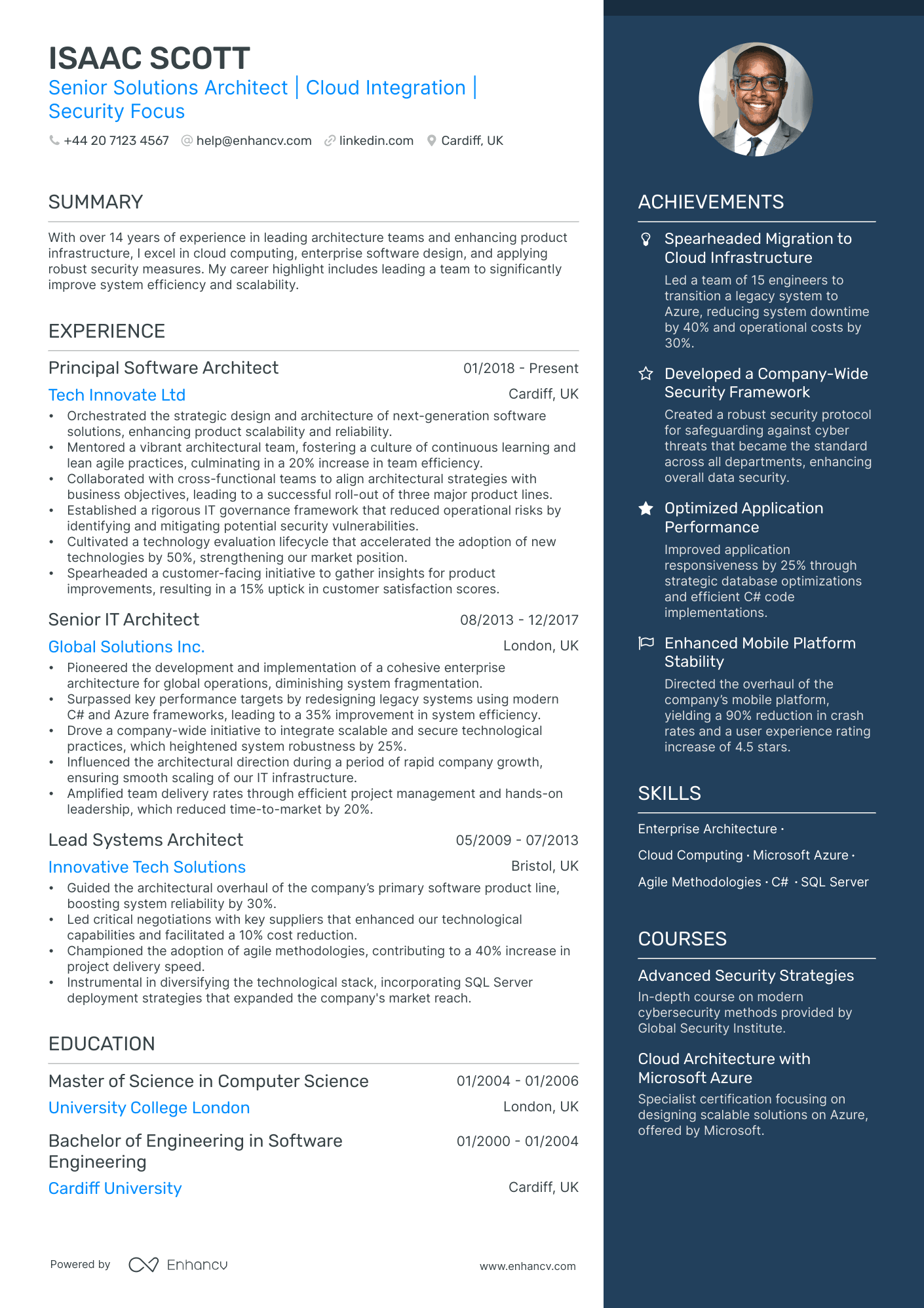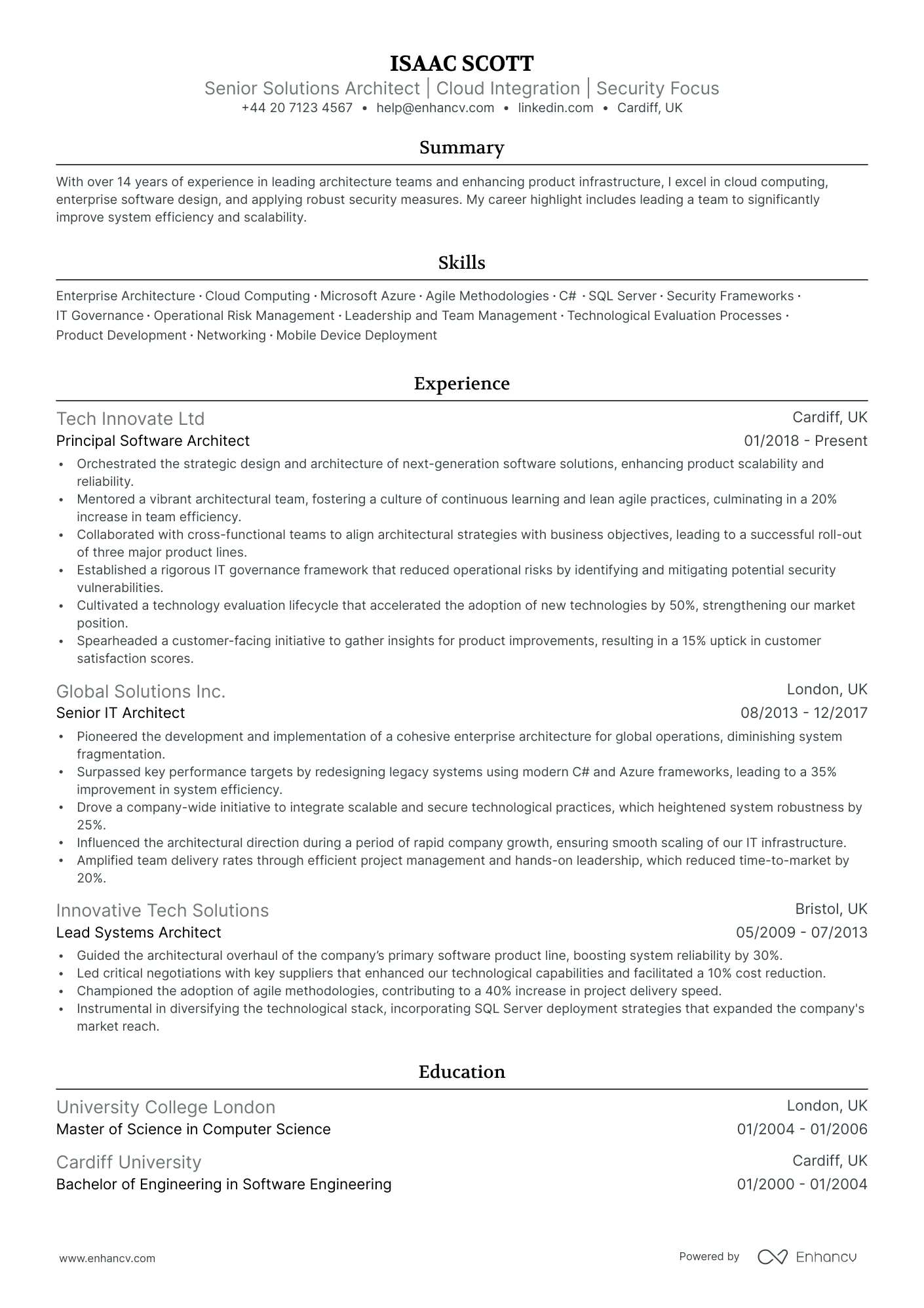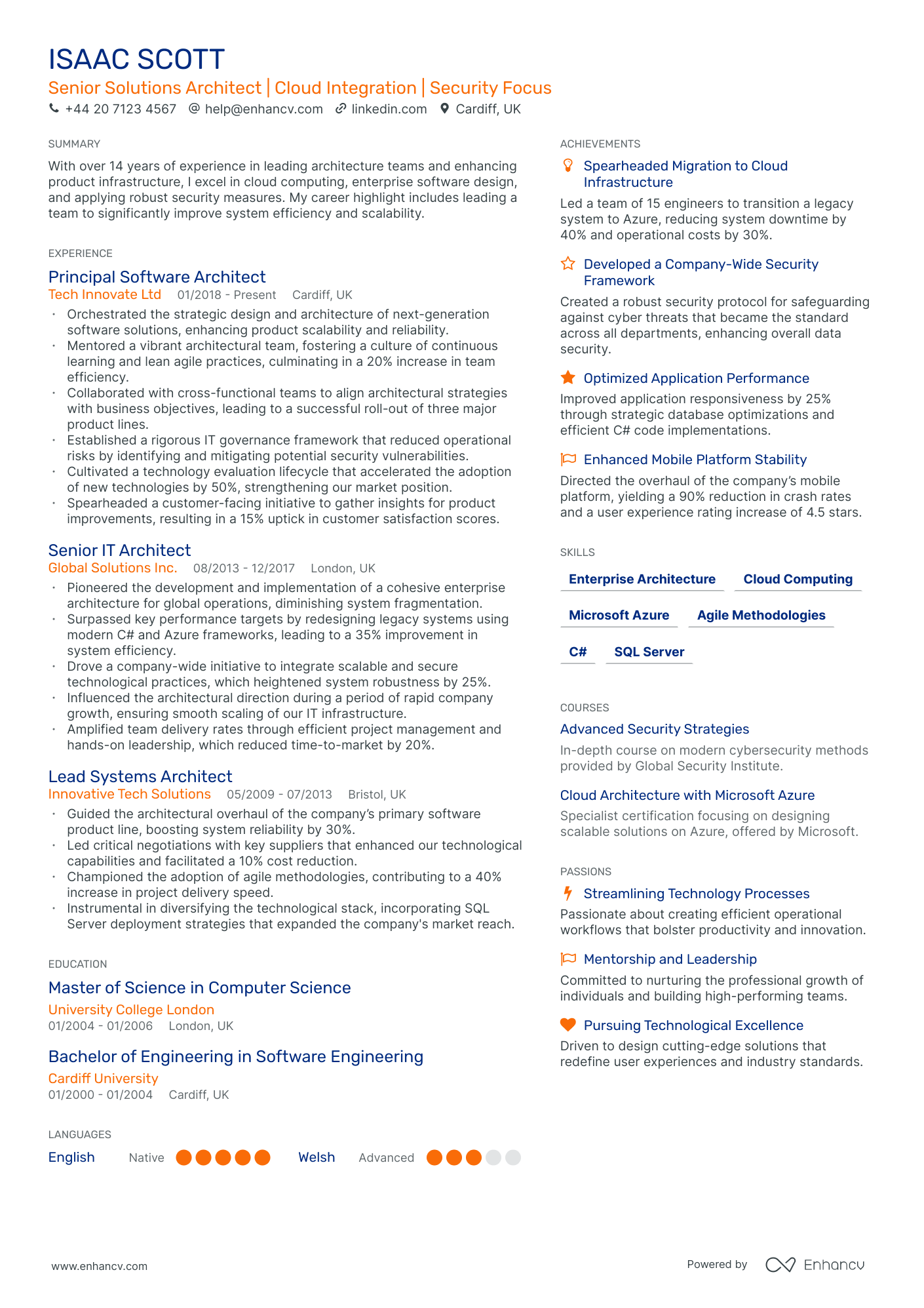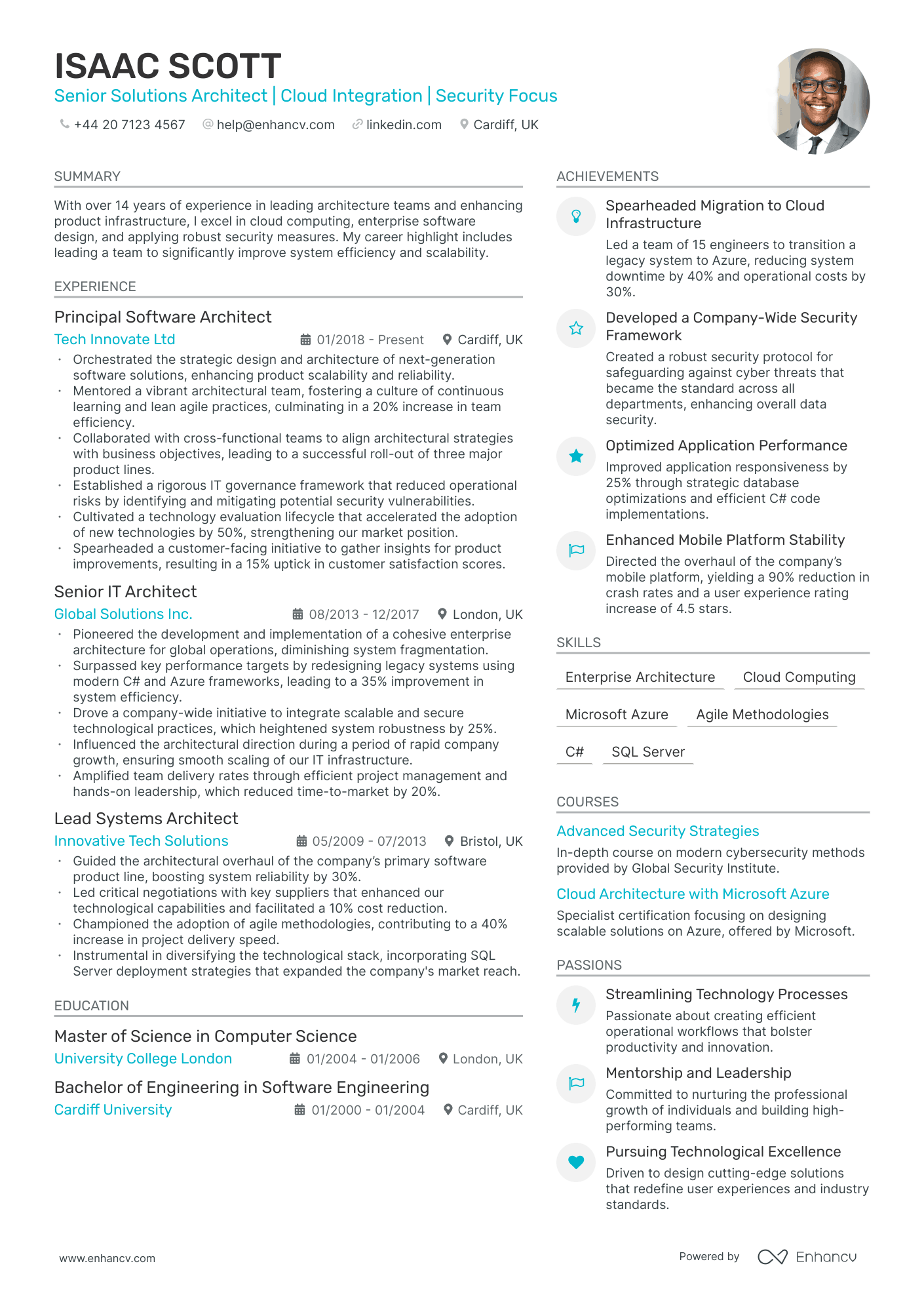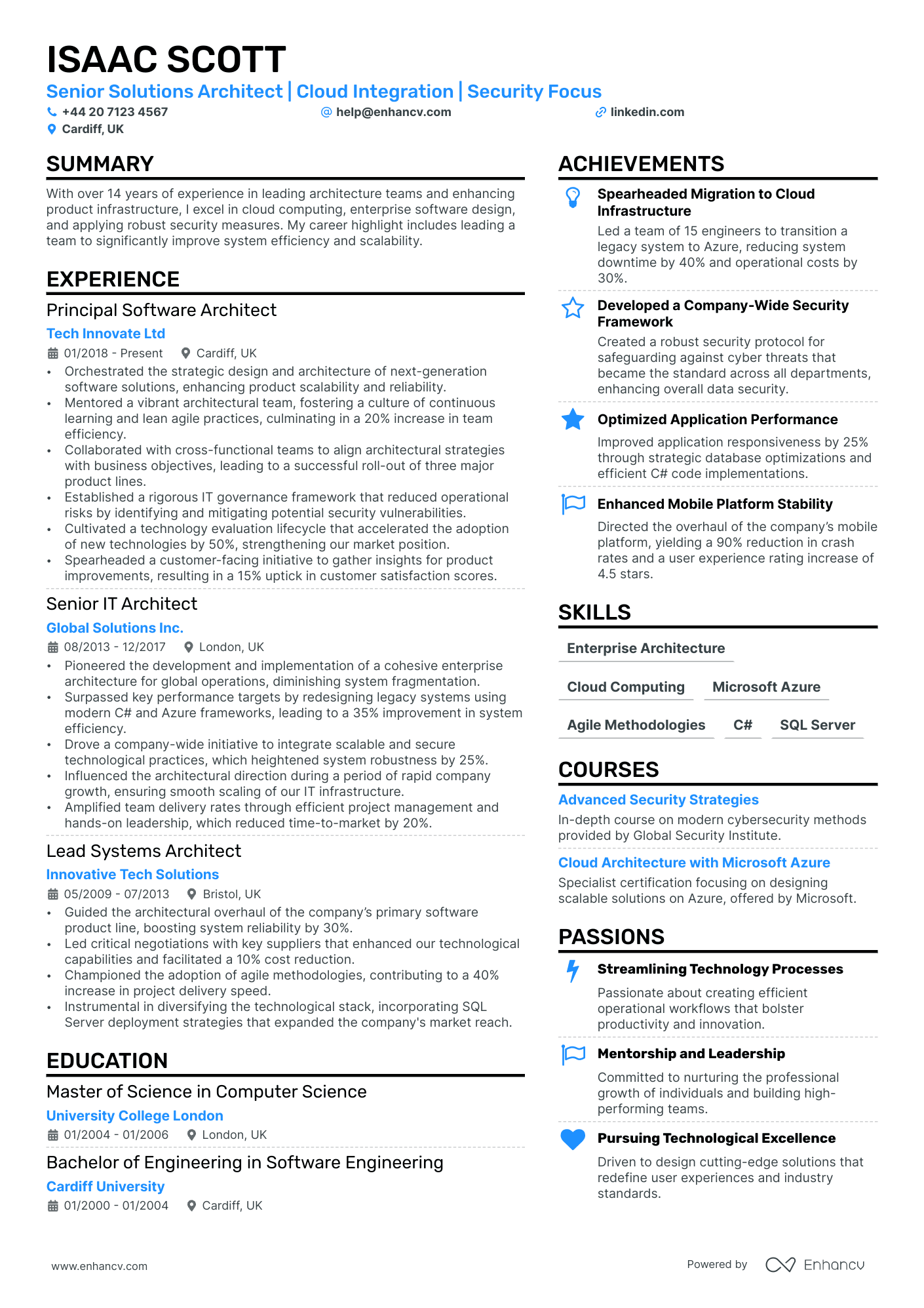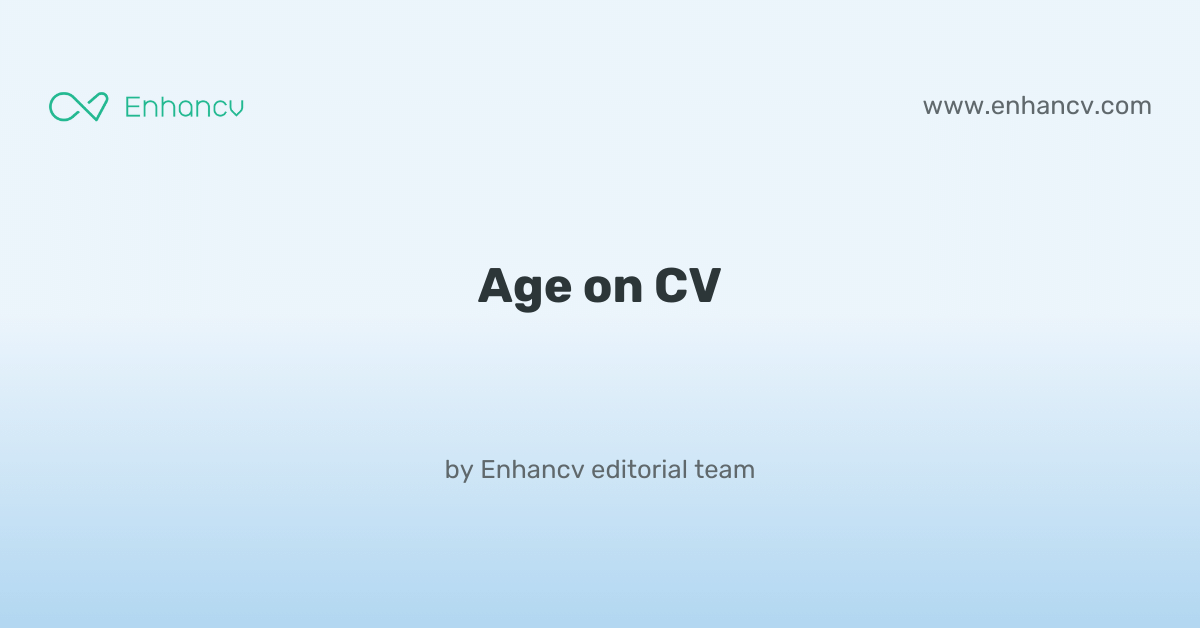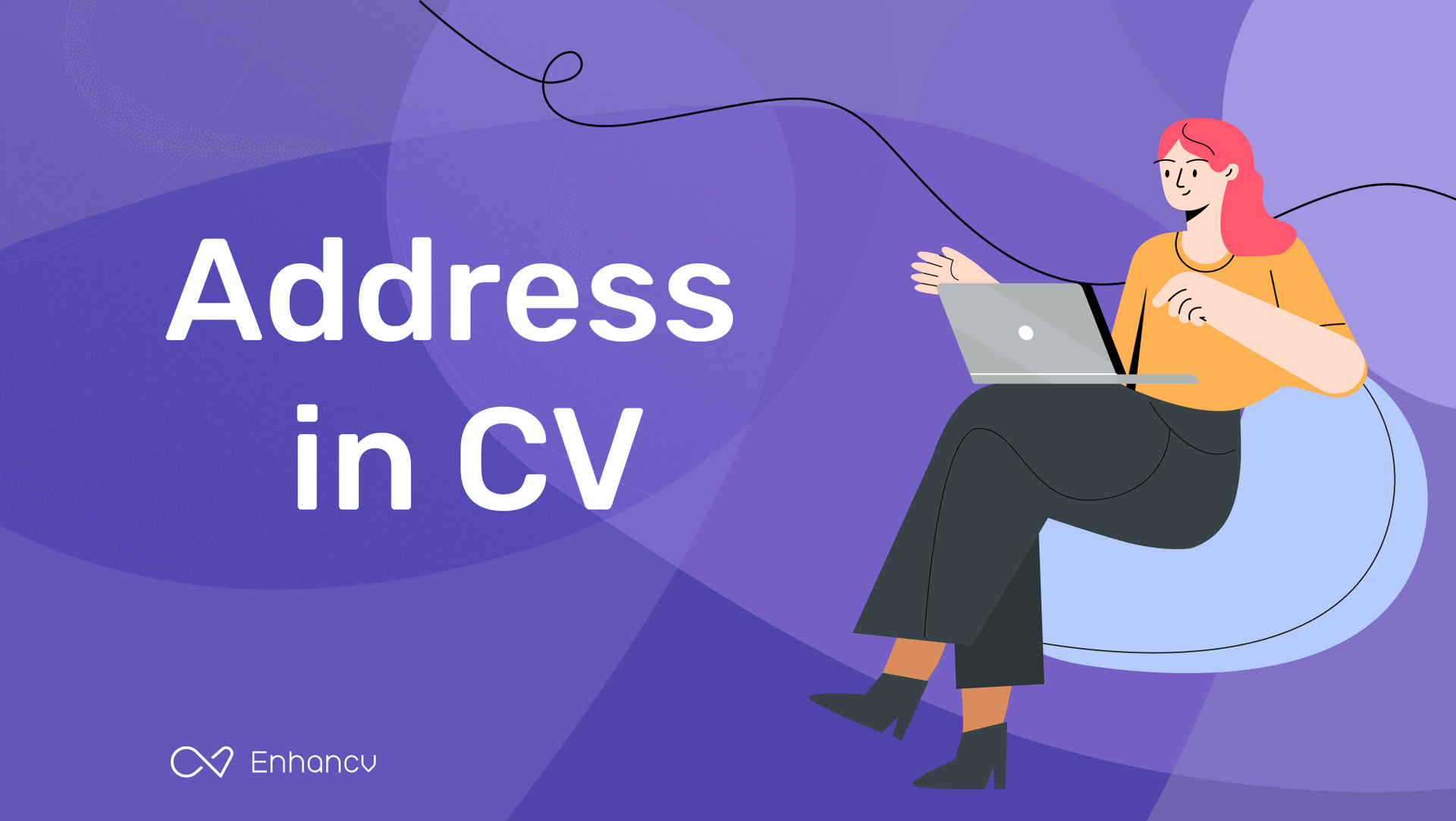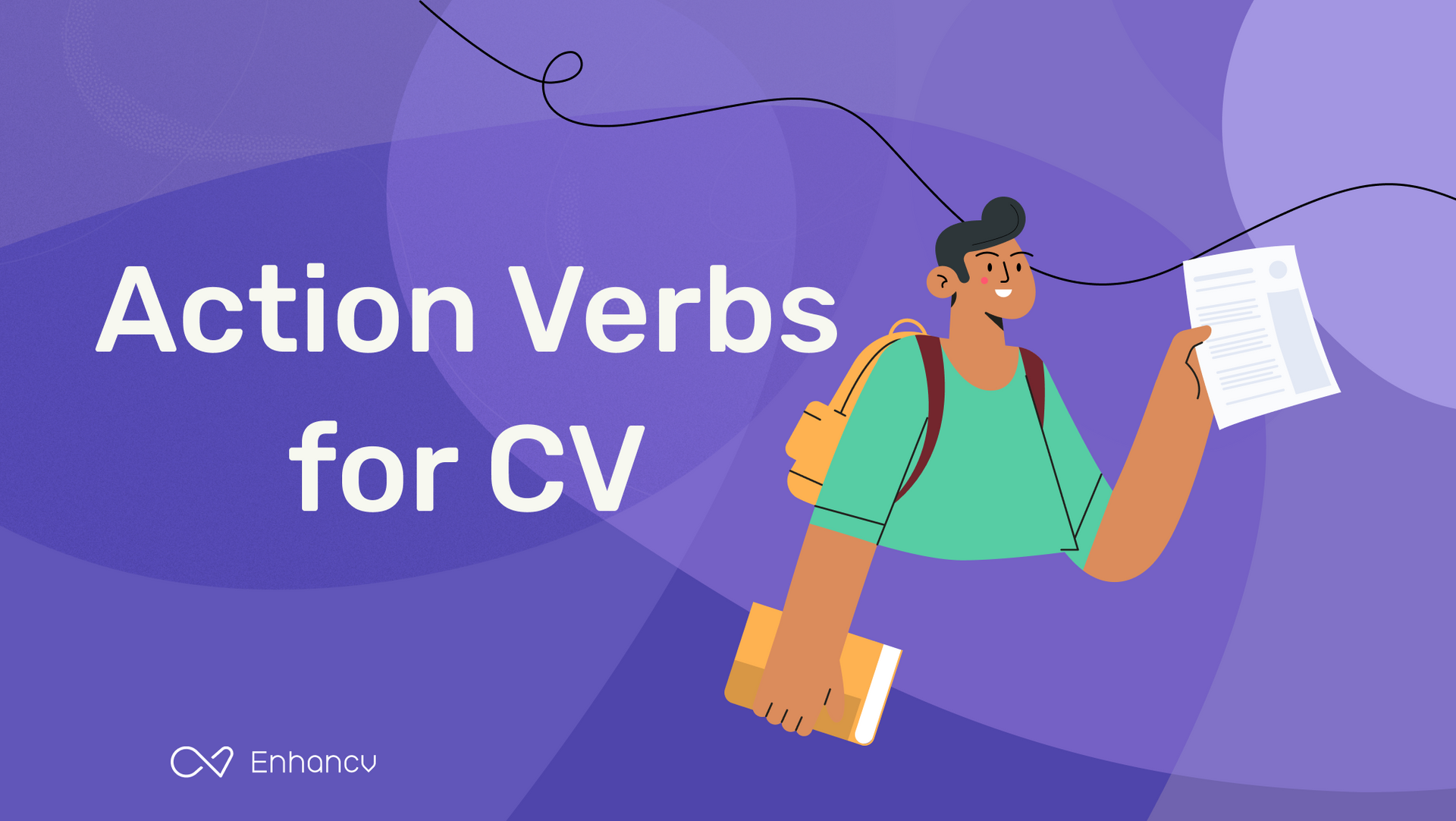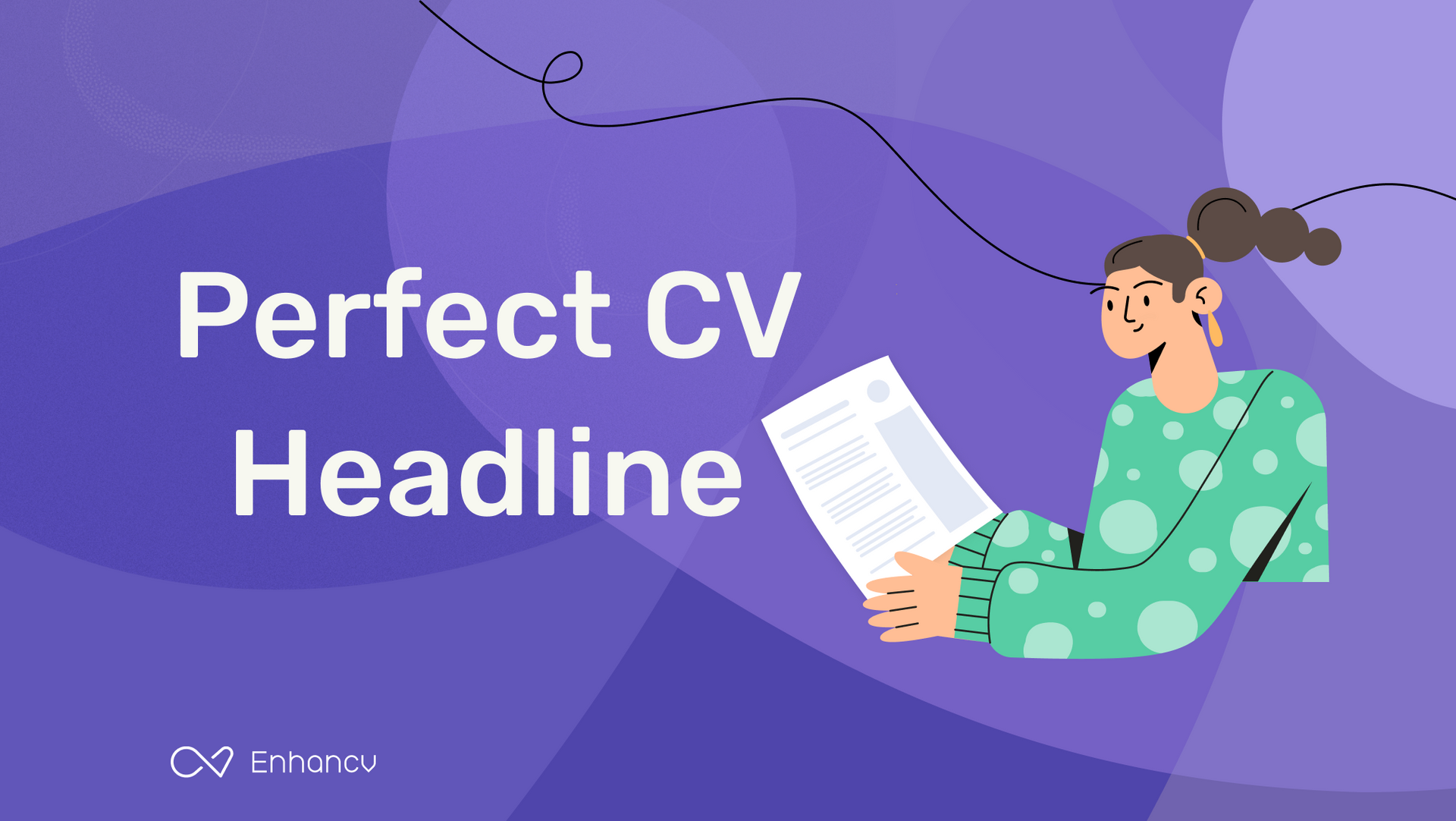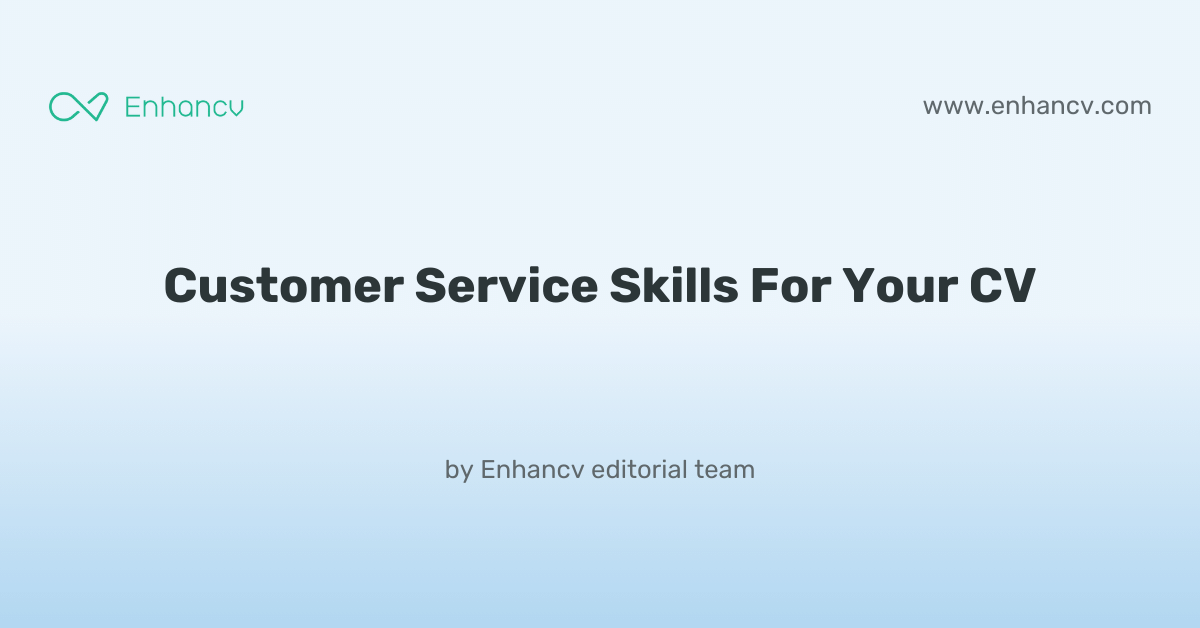Ensuring that your CV captures the multifaceted nature of your role can be a daunting challenge for a software architect. Our guide provides targeted advice on structuring your CV to highlight your strategic involvement and technical expertise effectively.
- Answer job requirements with your software architect CV and experience;
- Curate your academic background and certificates, following industry-leading CV examples;
- Select from +10 niche skills to match the ideal candidate profile
- Write a more succinct experience section that consists of all the right details.
Do you need more specific insights into writing your software architect CV? Our guides focus on unique insights for each individual role:
How complex should the format of your software architect CV be?
Perhaps, you decided to use a fancy font and plenty of colours to ensure your software architect CV stands out amongst the pile of other candidate profiles. Alas - this may confuse recruiters. By keeping your format simple and organising your information coherently, you'll ultimately make a better impression. What matters most is your experience, while your CV format should act as complementary thing by:- Presenting the information in a reverse chronological order with the most recent of your jobs first. This is done so that your career history stays organised and is aligned to the role;
- Making it easy for recruiters to get in touch with you by including your contact details in the CV header. Regarding the design of your CV header, include plenty of white space and icons to draw attention to your information. If you're applying for roles in the UK, don't include a photo, as this is considered a bad practice;
- Organising your most important CV sections with consistent colours, plenty of white space, and appropriate margins (2.54 cm). Remember that your CV design should always aim at legibility and to spotlight your key information;
- Writing no more than two pages of your relevant experience. For candidates who are just starting out in the field, we recommend to have an one-page CV.
One more thing about your CV format - you may be worried if your double column CV is Applicant Tracker System (ATS) complaint. In our recent study, we discovered that both single and double-column CVs are ATS-friendly . Most ATSes out there can also read all serif and sans serif fonts. We suggest you go with modern, yet simple, fonts (e.g. Rubik, Lato, Raleway) instead of the classic Times New Roman. You'll want your application to stand out, and many candidates still go for the classics. Finally, you'll have to export your CV. If you're wondering if you should select Doc or PDF, we always advise going with PDF. Your CV in PDF will stay intact and opens easily on every OS, including Mac OS.
PRO TIP
For certain fields, consider including infographics or visual elements to represent skills or achievements, but ensure they are simple, professional, and enhance rather than clutter the information.
The top sections on a software architect CV
- Personal Details section for contact information and professional identity.
- Professional Summary to highlight architectural expertise and value.
- Work Experience detailing roles, projects, and software architecture achievements.
- Technical Skills showcasing specific architectural tools and methodologies.
- Education and Certifications to verify formal training and qualifications relevant to software architecture.
What recruiters value on your CV:
- Highlight your experience with diverse software systems and architectural patterns to demonstrate your ability to design scalable and maintainable solutions.
- Showcase your leadership skills by detailing your experience in guiding technical teams and making high-level design choices.
- Illustrate your proficiency in multiple programming languages and tools, emphasising those on which you've engineered complex systems.
- Include specific examples of successful projects where your architectural decisions led to increased efficiency, cost savings, or enhanced functionality.
- Point out your familiarity with current industry trends such as microservices, containerisation, and cloud-native development, aligning your expertise with future-focused practices.
Recommended reads:
What information should you include in your software architect CV header?
The CV header is potentially the section that recruiters would refer to the most, as it should include your:
- Contact details - your professional (non-work) email address and phone number;
- Professional photograph - if you're applying hinting at the value you bring as a professional.
Many professionals often struggle with writing their software architect CV headline. That's why in the next section of this guide, we've curated examples of how you can optimise this space to pass any form of assessment.
Examples of good CV headlines for software architect:
- Software Architect | Agile Methodologies | AWS Certified | 12+ Years of Innovative Design Solutions
- Lead Software Architect | Full-Stack Development | Microservices Specialist | Sun Certified Java Programmer | 15 Years Experience
- Principal Software Architect | Enterprise Integration | TOGAF Certified | 20 Years of Technical Leadership
- Senior Software Architect | Cloud Infrastructure Expert | DevOps and CI/CD | Microsoft Certified | 18 Years in Tech
- Junior Software Architect | Data Modelling Enthusiast | Recent Grad MSC Software Engineering | 2 Years Hands-On Experience
- Associate Software Architect | Cybersecurity Focus | User-Centric Design | CompTIA Security+ | 5 Years Progressive Experience
Catching recruiters' attention with your software architect CV summary or objective
Located closer to the top of your CV, both the summary and objective are no more than five sentences long and serve as an introduction to your experience. What is more, you could use either to entice recruiters to read on. Select the:
- Summary, if you happen to have plenty of relevant experience. Feature your most impressive accomplishments and up to three skills that are relevant to the job you're applying for;
- Objective, if you're just starting your career off. Provide your career goals and answer how you see the role you are applying for will match your professional growth.
Judging which one you need to add to your software architect CV may at times seem difficult. That’s why you need to check out how professionals, with similar to your experience, have written their summary or objective, in the examples below:
CV summaries for a software architect job:
- Seasoned Software Architect with over 12 years of experience in designing scalable, resilient systems for financial sectors. Expert in Java and Microservices with a portfolio showcasing a complete architectural overhaul that increased system efficiency by 40%. Seeking to leverage comprehensive background in strategic planning to drive future technology advancements.
- Distinguished engineer with a decade of expertise in architecting robust cloud-based solutions in the technology sector. Proficient in Python, AWS, and containerisation, having led the development of a cloud-native platform that enhanced data processing speeds by 50%, demonstrating a strong commitment to high-quality software solutions.
- Former Mechanical Engineer pivoting to Software Architecture with a solid grasp of foundational programming concepts and proficiency in C++. Completed numerous online courses in system design and participated in hackathons to augment knowledge, with a proven track record in problem-solving and project management.
- Accomplished Data Analyst with 7 years of experience, preparing for a transition into Software Architecture. Acquired programming skills in R and JavaScript, with a deep understanding of database structures and analytics platforms. Developed a predictive analytics tool that informed business decisions, illustrating a knack for tech innovation and strategic insight.
- A recent Computer Science graduate eager to apply theoretical knowledge and fresh perspective on modern software design. Looking to develop practical skills in a hands-on environment through engagement with complex projects that demand creativity, while contributing to the development of cutting-edge software solutions.
- Aspiring Software Architect with a strong foundation in theoretical computer science, keen to gain experience in developing high-quality software architectures. Committed to mastering the practical application of design principles and eager to contribute to projects that utilises modern technological trends and challenges problem-solving abilities.
More detailed look into your work history: best advice on writing your software architect CV experience section
The CV experience is a space not just to merely list your past roles and responsibilities. It is the CV real estate within which you could detail your greatest accomplishments and skills, while matching the job requirements. Here's what to have in your experience section:
- Prove you have what the job wants with your unique skill set and past successes;
- Start each bullet with a strong, action verb, and continue with the outcome of your responsibility;
- Use any awards, nominations, and recognitions you've received as solid proof of your skill set and expertise;
- align your experience with the role responsibilities and duties.
For more help on how to write your CV experience section, check out the next section of our guide:
Best practices for your CV's work experience section
- Designed and implemented scalable, secure, and maintainable software architectures for a variety of clients, resulting in a 30% reduction in time-to-market for new features.
- Led a team of developers in the adoption of microservices architecture, ensuring seamless integration with existing legacy systems and a 20% improvement in system resilience.
- Authored technical specifications and architecture documentation for stakeholders, facilitating clear communication and alignment across cross-functional teams.
- Championed the use of cloud-native technologies, successfully migrating three enterprise applications to the cloud, leading to a 25% decrease in operational costs.
- Conducted thorough code reviews and architectural assessments, maintaining high standards of code quality and performance optimisation for critical business applications.
- Facilitated architectural workshops and training sessions for development teams, promoting best practices in software design and improving team competencies.
- Collaborated closely with product managers and UX designers to ensure architectural designs met both functional and non-functional requirements, enhancing user satisfaction.
- Spearheaded the research and adoption of emerging technologies, such as container orchestration and serverless computing, keeping the company at the forefront of innovation.
- Managed technical debt and proposed strategic refactoring initiatives, which increased system maintainability and extended the lifespan of core products.
- Led the development of a new cloud-based platform using microservices architecture, which supported 10,000+ concurrent users and reduced server costs by 20%.
- Designed a robust API ecosystem which enabled integration with third-party vendors, enhancing the product's capabilities and user experience.
- Coordinated with cross-functional teams to overhaul the legacy codebase, improving system performance by 35% and significantly reducing downtime.
- Developed a strategic plan for the transition to a serverless architecture which lowered operational expenses by 15% while maintaining 99.99% uptime.
- Implemented a continuous delivery pipeline that enhanced deployment frequency by 40%, enabling quicker feature releases and bug fixes.
- Orchestrated a cross-departmental initiative for adopting agile methodologies that accelerated product delivery cycles by 25%.
- Engineered a scalable e-commerce platform that supported a 50% increase in customer transactions during peak periods without compromising performance.
- Championed the implementation of data encryption and cybersecurity measures, leading to a 100% compliance rate with industry security standards.
- Piloted a mentorship program to elevate the technical proficiency of the development team, culminating in a 30% improvement in project delivery efficiency.
- Instituted a comprehensive service-oriented architecture (SOA) that resulted in a 20% cost reduction for integration projects while improving system interoperability.
- Custom-designed a real-time analytics tool that enhanced data-driven decision-making, boosting overall business revenue by 18%.
- Fostered team growth and skills development by introducing cutting-edge technologies, keeping the company at the forefront of technological innovation.
- Architected an AI-powered recommendation engine that increased user engagement by 25% and sales conversions by 15%.
- Steered the migration of legacy applications to Kubernetes, leading to a 50% enhancement in deployment speed and a 30% reduction in maintenance costs.
- Cultivated a collaborative culture that utilizes DevOps best practices to shorten the software lifecycle and foster innovation.
- Directed the implementation of a modular software design that expedited feature development time by 22% without sacrificing system stability or scalability.
- Launched an effective disaster recovery strategy that ensured 99.95% service availability, safeguarding against data loss and minimizing business disruption.
- Organized international workshops for the development team focused on emerging software patterns, increasing team productivity and expertise in new technologies.
- Spearheaded a digital transformation initiative that modernized customer-facing applications, improving user experience and satisfaction scores by 20%.
- Created a cross-platform mobile application architecture that doubled the company's mobile user base and enhanced the accessibility of services.
- Implemented robust code review and quality assurance protocols that slashed software defects by 40%, reinforcing the brand's reputation for reliability.
- Oversaw the design of a flexible microservices-based infrastructure which was instrumental in streamlining the product development life cycle by 30%.
- Devised a comprehensive data warehousing strategy that managed a threefold increase in data volume while maintaining optimal system performance.
- Collaborated with product managers to define technical requirements that aligned with business goals, leading to the successful launch of four major product lines.
What to add in your software architect CV experience section with no professional experience
If you don't have the standard nine-to-five professional experience, yet are still keen on applying for the job, here's what you can do:
- List any internships, part-time roles, volunteer experience, or basically any work you've done that meets the job requirements and is in the same industry;
- Showcase any project you've done in your free time (even if you completed them with family and friends) that will hint at your experience and skill set;
- Replace the standard, CV experience section with a strengths or achievements one. This will help you spotlight your transferrable skills that apply to the role.
Recommended reads:
PRO TIP
If applicable, briefly mention a situation where things didn’t go as planned and what you learned from it, demonstrating your ability to learn and adapt.
Key software architect CV skills: what are hard skills and soft skills
Let's kick off with the basics. You know that you have to include key job requirements or skills across your CV. For starters, take individual skills from the job description and copy-paste them into your CV, when relevant. Doing so, you'll ensure you have the correct skill spelling and also pass the Applicant Tracker System (ATS) assessment. There are two types of skills you'll need to include on your CV:
- Hard skills - technical abilities that are best defined by your certificates, education, and experience. You could also use the dedicated skills section to list between ten and twelve technologies you're apt at using that match the job requirements.
- Soft skills - your personal traits and interpersonal communication skills that are a bit harder to quantify. Use various CV sections, e.g. summary, strengths, experience, to shine a spotlight on your workspace achievements, thanks to using particular soft skills.
Remember that your job-winning CV should balance both your hard and soft skills to prove your technical background, while spotlighting your personality.
Top skills for your software architect CV:
Software design patterns
Systems architecture
High-level programming languages (e.g., Java, C#)
Software development methodologies (e.g., Agile, Scrum, Waterfall)
Database design and management
Cloud computing (e.g., AWS, Azure, GCP)
DevOps practices (e.g., CI/CD, containerisation)
Microservices architecture
API design and integration
UML and other modelling techniques
Analytical thinking
Problem-solving
Leadership
Communication
Stakeholder management
Project management
Teamwork
Adaptability
Strategic planning
Continuous learning
PRO TIP
Order your skills based on the relevance to the role you're applying for, ensuring the most pertinent skills catch the employer's attention first.
Listing your university education and certificates on your software architect CV
The best proof of your technical capabilities would be your education and certifications sections. Your education should list all of your relevant university degrees, followed up by their start and completion dates. Make sure to also include the name of the university/-ies you graduated from. If you happen to have less professional experience (or you deem it would be impressive and relevant to your application), spotlight in the education section:
- that you were awarded a "First" degree;
- industry-specific coursework and projects;
- extracurricular clubs, societies, and activities.
When selecting your certificates, first ask yourself how applicable they'd be to the role. Ater your initial assessment, write the certificate and institution name. Don't miss out on including the completion date. In the below panel, we've curated relevant examples of industry-leading certificates.
PRO TIP
Use mini case studies or success stories in your CV to demonstrate how your skills have positively impacted previous roles or projects.
Recommended reads:
Key takeaways
Impressing recruiters with your experience, skill set, and values starts with your professional software architect CV. Write concisely and always aim to answer job requirements with what you've achieved; furthermore:
- Select a simple design that complements your experience and ensures your profile is presentable;
- Include an opening statement that either spotlights your key achievements (summary) or showcases your career ambitions (objective);
- Curate your experience bullets, so that each one commences with a strong, action verb and is followed up by your skill and accomplishment;
- List your hard and soft skills all across different sections of your CV to ensure your application meets the requirements;
- Dedicate space to your relevant higher education diplomas and your certificates to show recruiters you have the necessary industry background.
